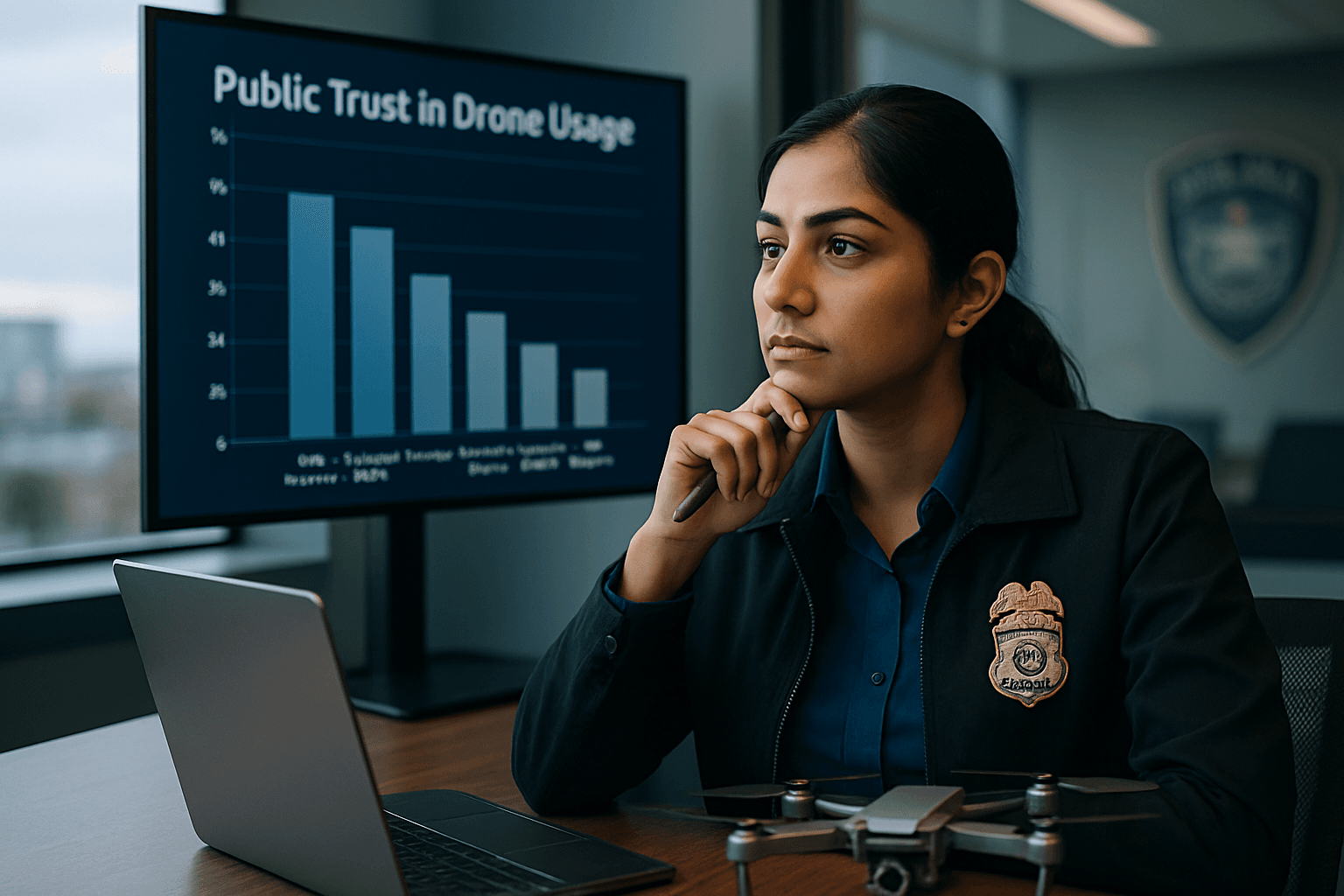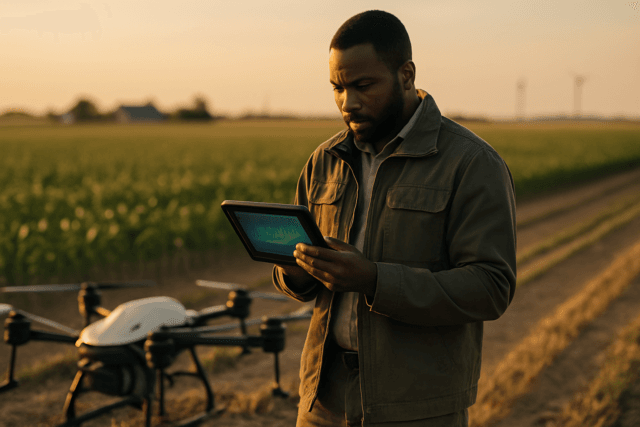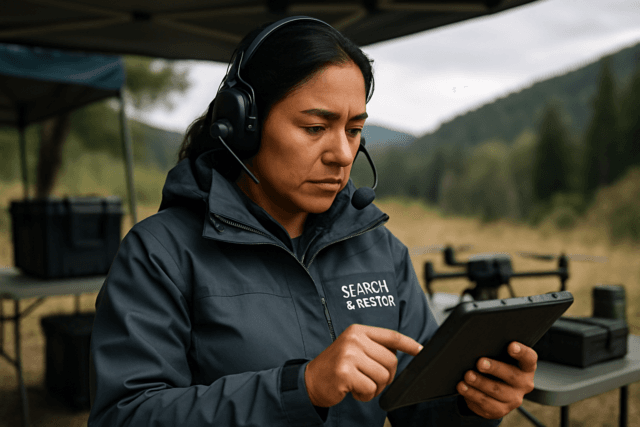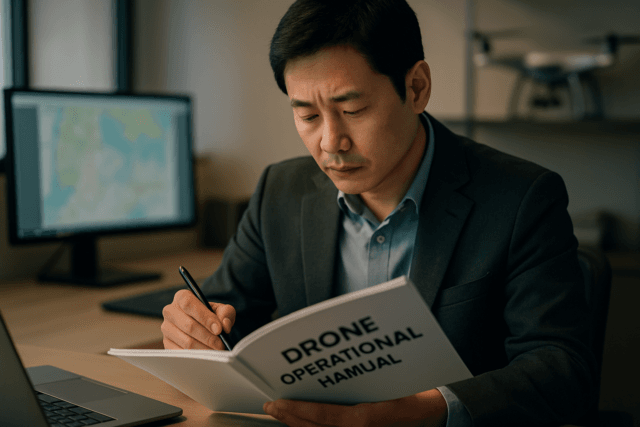The increasing integration of Unmanned Aerial Vehicles (UAVs), commonly known as drones, into law enforcement operations represents a significant technological advancement in the pursuit of public safety and security. These aerial assets offer a myriad of capabilities, from enhanced surveillance to critical support in emergency scenarios. However, their deployment has simultaneously ignited a complex debate surrounding public perception, as communities grapple with the tension between increased security measures and fundamental concerns about privacy, civil liberties, and the potential for governmental overreach. Understanding this multifaceted public perception is crucial for shaping effective policies and fostering trust in the evolving landscape of modern policing.
The Expanding Role of Drones in Modern Policing
Law enforcement agencies globally are rapidly adopting drones, recognizing their distinct advantages over traditional methods. The benefits span a wide range of applications, contributing to improved operational efficiency, officer safety, and overall public security.
Enhanced Situational Awareness and First Response
Drones provide an unparalleled aerial perspective, offering real-time situational awareness that can be critical in dynamic scenarios. They can quickly assess incidents, monitor large crowds, or secure facilities where fixed cameras might have limited views. This rapid deployment capability is particularly valuable in time-sensitive situations such as search and rescue missions, where drones can cover vast areas faster than ground teams and transmit real-time data to help rescuers pinpoint exact locations. As first responders, drones can arrive at a scene within minutes, providing an aerial assessment before human responders, which can be a game-changer in crisis management and can potentially save lives by identifying threats from a safe distance.
Crime Scene Investigation and Evidence Collection
For crime scene investigations, drones offer a bird’s-eye view, enabling officers to capture detailed images and aerial surveillance of a scene. This is especially useful for large or complex sites, allowing for comprehensive documentation of layouts and evidence from multiple angles, and even the creation of 3D models for later analysis. This efficiency not only speeds up investigations but also enhances the accuracy of collected data.
Tactical Operations and Officer Safety
In dangerous situations like hostage rescues, car chases, or active shooter events, drones can significantly enhance officer safety by allowing personnel to engage perpetrators or assess threats from a safe distance. They can identify a shooter’s location and movements, enabling more precise and effective tactical planning and reducing risk to human officers. Drones also aid in de-escalation strategies by providing a non-intrusive way to monitor volatile situations without immediate physical presence, which might otherwise escalate tensions.
Crowd Control and Public Event Monitoring
Drones are increasingly integral to security plans for major public events, offering crucial aerial perspectives for crowd monitoring and control, and early identification of potential security threats. They provide police with quick and detailed insights, enabling faster and more accurate responses to emergencies, thereby enhancing public safety and police efficiency. Some larger drones can even carry loudspeakers for public announcements or less-lethal tools for crowd control.
Cost-Effectiveness and Resource Optimization
Compared to traditional manned aircraft like helicopters, drones are a significantly more cost-effective method for aerial surveillance, making them accessible to a wider range of law enforcement agencies. By deploying drones for routine surveillance, agencies can free up officers for community engagement and other high-priority tasks. The data collected can also be used to optimize policing strategies and resource deployment by analyzing patterns in drone footage, such as crime trends or traffic flow.
Public Concerns and Ethical Dilemmas
Despite the undeniable operational benefits, the use of drones by law enforcement agencies is often met with significant public scrutiny, primarily due to concerns about privacy, data collection, and the potential for misuse.
Privacy and the Fourth Amendment
One of the most prominent ethical issues is the potential violation of privacy rights. Drones, equipped with high-resolution cameras, thermal imaging, heat sensors, automated license plate readers, and even cell site simulators, can gather extensive data on individuals without their knowledge or consent. This capability raises questions about what constitutes reasonable surveillance and whether such surveillance infringes on Fourth Amendment protections against unlawful search and seizure. Critics argue that drones can “peek into areas where they once needed a warrant” by flying over private property that is otherwise not visible from public vantage points.
Data Protection and Governmental Overreach
The manner in which data collected by drones is processed, stored, and used by law enforcement agencies is another significant concern. Without proper safeguards, there is a risk of misuse or unauthorized access to sensitive information, potentially leading to governmental domination and pervasive surveillance, particularly in marginalized communities. The “big brother” surveillance aspect, where individuals may feel constantly monitored, contributes to public distrust.
“Chilling Effect” on Civil Liberties
The use of drones for crowd monitoring, especially during protests, is particularly contentious. It can be perceived as an infringement on free speech and the right to protest, potentially creating a “chilling effect” where individuals feel deterred from participating in public demonstrations due to fear of being surveilled. This highlights a critical balance between public safety and human rights, including freedom of movement.
The Specter of Weaponized Drones
The hypothetical or actual use of armed drones in domestic law enforcement introduces an additional layer of ethical complexity and public apprehension. While drones could enhance the ability to neutralize threats, their use must adhere to established ethical principles such as necessity, proportionality, and precaution. The International Association of Chiefs of Police (IACP) has expressed wariness about weaponization, stating that public acceptance of airborne use of force is doubtful and could lead to unnecessary community resistance. The perception of “militarization of the police” is a key factor here, leading to public distrust.
Officer Desensitization and Accountability
Concerns also arise regarding the “tele-present” officer who operates drones remotely. Critics suggest that such physical alienation might desensitize police to public concerns and could be inconsistent with a “serve and protect” ethos. Furthermore, it raises questions about accountability and decision-making processes, especially concerning the use of force.
Varied Public Perceptions Across Applications
Public support for law enforcement drone use is not monolithic; it varies significantly depending on the specific application. Studies indicate a mixed public perception, with strong support for certain uses and considerable opposition to others.
High Support for Emergency and Investigative Uses
Generally, the public shows strong support for drone use in emergencies and for specific investigative tasks. For instance, search and rescue operations consistently receive high levels of public approval, with some studies showing as much as 90% support. Similarly, tactical operations (82%) and crime scene investigations (70%) also garner clear majority support. These applications are often seen as less intrusive and directly aligned with public safety and life-saving efforts.
Lower Support for General Surveillance
Conversely, public support significantly diminishes for general surveillance activities. Monitoring criminal activity in public places, for example, receives less support, dropping to around 62% in some local studies compared to 45% nationally. Support falls even further for traffic monitoring (60%), general surveillance over public spaces (35%), and especially for the monitoring of protests (42%). The perceived personal or community risks associated with pervasive surveillance contribute to these “Not Over My Backyard (NOMBY)” attitudes.
The Impact of Local Context
Interestingly, public support can vary by geographical location. Residents in areas with higher levels of public trust in their police or those with direct experience of drone benefits (e.g., Mesa County, Colorado, known for its Sheriff’s Office’s drone use) tend to have more positive views and fewer privacy concerns than national averages. This suggests that transparent use and positive community engagement can influence public perception.
The Legal and Regulatory Landscape
The rapid evolution of drone technology has outpaced existing legal and regulatory frameworks, creating a complex and often fragmented landscape.
Federal Aviation Administration (FAA) Regulations
In the United States, the FAA regulates all U.S. airspace, setting foundational guidelines for drone operations. Law enforcement agencies can operate drones under the small UAS rule (Part 107), which generally requires operations to be at or below 400 feet and within visual line of sight, or by obtaining a Certificate of Authorization (COA) to function as a public aircraft operator. The FAA can also issue waivers for specific scenarios, such as night flights or operations over people, though these require special permission.
State-Level Laws and Warrant Requirements
While the FAA governs airspace, states often enact their own laws regarding drone use, particularly concerning privacy and law enforcement applications. A significant number of states, including Alaska, Florida, Illinois, Maine, Montana, North Carolina, and Texas, have passed legislation requiring law enforcement agencies to obtain a search warrant to use drones for surveillance or to conduct a search, with certain exceptions for exigent circumstances. However, the legal landscape remains fragmented, with varying interpretations of drone-related privacy issues across jurisdictions due to a lack of consistent federal guidelines.
Addressing the Legal and Ethical Gaps
The debate over drone use highlights the need for clear accountability standards and robust regulatory criteria. Lawmakers and courts are grappling with how to apply existing constitutional protections, such as the Fourth Amendment, to a technology that can gather vast amounts of data without physical intrusion. The challenge lies in crafting policies that respect privacy rights and public safety while enhancing operational effectiveness.
Fostering Trust and Responsible Integration
To bridge the gap between law enforcement’s need for advanced tools and public concerns, several strategies are crucial for fostering trust and ensuring responsible integration of drone technology.
Transparency and Community Engagement
Open dialogue and transparent policies are vital. Agencies that clearly communicate how and why drones are being used, and the safeguards in place to protect civil liberties, are more likely to gain public acceptance. Establishing local law enforcement drone advisory councils with citizen members can provide citizen oversight and help expose the public to the realities of modern policing, fostering understanding and trust.
Clear Policies and Oversight Mechanisms
Implementing clear policies and robust oversight mechanisms is essential. This includes strict guidelines on data collection, storage, and retention, as well as explicit rules governing the use of advanced capabilities like facial recognition software, which is a particular public concern. Policies should detail when a warrant is required, how privacy will be protected in public and private spaces, and the procedures for addressing public complaints. Some argue that the danger lies not in the drone technology itself, but in how information gathered is dealt with and acted upon by the police.
Training and Accountability
Comprehensive training for drone operators is necessary to ensure ethical use and compliance with established protocols. This includes training not only on flight operations but also on the legal and ethical implications of surveillance. Clear accountability standards are crucial to address instances of misuse or policy violations.
Balancing Innovation with Societal Values
Ultimately, the successful integration of drones into law enforcement hinges on a careful balance between leveraging technological innovation for public safety and upholding fundamental societal values, particularly privacy and civil liberties. As drone technology continues to advance, ongoing public discourse, adaptive legal frameworks, and a commitment to transparent and accountable practices will be paramount to ensuring that drones serve as a beneficial tool for law enforcement without eroding public trust.





